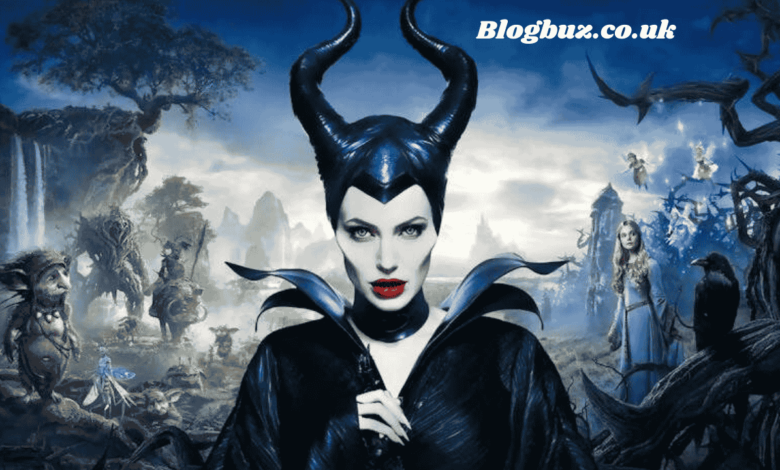Maleficent Wouldnt Be a Lacky: An Iconic Disney Character’s Independence

Maleficent, one of Disney’s most complex and compelling characters, is a testament to strength, independence, and resilience. Her evolution has captivated audiences worldwide, from her original Sleeping Beauty (1959) portrayal to the live-action films starring Angelina Jolie. But why is it often said that Maleficent wouldnt be a lacky? This article details her autonomy, motivations, and enduring legacy, showcasing why she defies subservience and commands her destiny.
The Origins of Maleficent’s Autonomy
In Disney’s 1959 animated classic Sleeping Beauty, Maleficent is introduced as a formidable sorceress driven by revenge after being excluded from Princess Aurora’s christening. Her motivations may seem simple—retaliation for an insult—but her power and poise set her apart from other villains. Even in this initial portrayal, Maleficent operates independently, orchestrating her plans without relying on others. Unlike traditional Disney villains who employ bumbling henchmen, Maleficent’s intelligence and strategic mind ensure she remains in control.
Her lack of reliance on subordinates underscores her strength. While her minions fail to find Aurora, Maleficent discovers and curses the princess. Even in her animated debut, this self-sufficiency establishes her as a character who commands respect and fear without needing to serve anyone.
A Deeper Dive in the Live-Action Films
The live-action adaptation of Maleficent (2014) provides a richer narrative, delving into her backstory and motivations. Here, Maleficent is depicted as a kind and noble fairy living in the Moors, a magical realm she protects. Her betrayal by King Stefan, who steals her wings to gain power, is a pivotal moment that transforms her into the vengeful “Mistress of All Evil.”
This betrayal fuels Maleficent’s actions, but it also highlights her autonomy. She doesn’t become a pawn in someone else’s schemes; instead, she reclaims her power and shapes her destiny. Her curse on Aurora is not just an act of revenge but a demonstration of her control and ability to assert dominance over her betrayer.
Redemption and Growth
Her character arc evolves further in Maleficent: Mistress of Evil (2019). Maleficent moves beyond vengeance, seeking to protect her kingdom and Aurora, whom she has come to love like a daughter. Her growth from a vengeful sorceress to a protective figure highlights her ability to adapt and change without compromising her autonomy. This journey of redemption solidifies her as a multidimensional character who would never reduce herself to a lackey’s role.
Why Maleficent Refuses to Be a Lackey
Independence as a Core Trait
Maleficent’s defining characteristic is her independence. She makes decisions and acts according to her values, even when facing overwhelming odds. Unlike other Disney villains who often depend on sidekicks or alliances, Maleficent stands alone. Her ability to wield immense power without external influence reinforces her image as a leader rather than a follower.
Complex Motivations
Personal motivations, such as betrayal, loss, and justice, drive Maleficent’s actions. This emotional depth makes her a relatable and compelling character. Unlike a lackey, who follows orders without question, Maleficent’s decisions stem from her experiences and desires. Her autonomy allows her to navigate her narrative on her terms.
Symbol of Female Empowerment
Maleficent challenges traditional gender roles and villain archetypes. Historically, female villains in Disney films were often portrayed as one-dimensional characters driven by jealousy or greed. Maleficent’s transformation into a complex, independent character represents a shift towards empowering narratives for women. She doesn’t serve a malevolent master or conform to societal expectations; instead, she reclaims her power and agency, inspiring audiences to do the same.
Rejection of Subservience
Throughout her story, Maleficent consistently rejects subservience. Even when alliances are formed, as seen in Maleficent: Mistress of Evil, they are partnerships rather than hierarchical relationships. This refusal to play second fiddle to anyone solidifies her as a character who leads, not follows.
The Impact of Maleficent on Disney’s Villain Archetypes
Maleficent’s portrayal has had a lasting impact on how Disney approaches its villains. Traditional villains like Ursula or Jafar often relied on henchmen to execute their plans, portraying them as dependent characters. Maleficent’s autonomy challenged this trope, paving the way for more nuanced antagonists.
This evolution is reflected by characters like Elsa from Frozen and Dr Facilier from The Princess and the Frog. While Elsa isn’t a villain, her struggles with isolation and power echo Maleficent’s complexity. Dr Facilier’s motivations, rooted in his desire for wealth and status, also demonstrate a move towards multidimensional villains.
Maleficent’s influence extends beyond Disney. Modern storytelling increasingly features villains with relatable backstories and emotional depth, breaking away from the simplistic good-versus-evil narrative.
Lessons from Maleficent’s Journey
Turning Pain into Power
Maleficent’s transformation from a betrayed fairy to a powerful sorceress showcases her resilience. She doesn’t allow her pain to define her but uses it as a catalyst for growth and empowerment.
The Importance of Autonomy
Maleficent’s refusal to be a lackey underscores the importance of independence. Her story reminds us that true power comes from within and that we should never compromise our values or autonomy.
Redemption Is Possible
Maleficent’s journey from vengeance to redemption illustrates that change is possible. Her ability to forgive and protect Aurora shows her capacity for love and growth, making her a symbol of hope and transformation.
Conclusion
Maleficent wouldnt be a lacky is more than just a statement; it’s a reflection of her character’s essence. From her origins in Sleeping Beauty to her reimagining in live-action films, Maleficent embodies strength, independence, and complexity. Her refusal to conform to subservience and her emotional depth and resilience set her apart as one of Disney’s most iconic characters.
As audiences continue to resonate with her story, Maleficent’s legacy endures. She reminds us that even in the face of betrayal and adversity, we have the power to reclaim our agency and shape our destiny. Indeed, Maleficent will never be a lackey, and her story inspires us to embrace our inner strength and independence.




